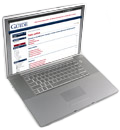Eversource Rate Hike to Go Toward New Grid, Energy Storage, and EV Projects

In a complex rate proceeding for two now-merged electric distribution utilities, the Massachusetts Department of Public Utilities (DPU) has determined that neither had proven a need for the full amount of rate relief sought, despite the passage of time since their last base rate cases. Consequently, the department ruled that out of the $56.1 million in additional revenues requested by NSTAR Electric Company, the utility should receive an increase of only $12.24 million. For the other utility, Western Massachusetts Electric Company (WMECo), the department determined that it should be allowed just $24.78 million of the $34.7 million for which it petitioned. The department conceded that it had been more than a decade since NSTAR’s last rate case and seven years since WMECo’s last base rate proceeding. It also admitted that significant capital investment needs had arisen during that time. Nevertheless, the department held that it must always be guided by the principle of gradualism so as to avoid rate shock for customers. It therefore authorized the more limited increases.
Although the two utilities had developed their respective rate applications separately, they actually filed jointly, with each listing itself as doing business as Eversource Energy. At the time of their filing (in mid- January of this year), each was operating as an individual wholly owned subsidiary of Eversource, their parent company. Subsequent to their rate filings, though, Eversource had moved to restructure the two companies to run on a fully consolidated basis. According to Eversource, it had decided to formally merge WMECo into NSTAR, with the two thereafter viewed as “fully integrated from a management and operational perspective.” The consolidation proposal thus became one of the matters to be resolved in the rate dockets.
After examining Eversource’s plan of reorganization, the department agreed that the consolidation would produce net savings for ratepayers and would enhance financial security for the two companies, which in turn would lead to a more reliable and cost-effective energy delivery system. That is, the DPU said, its cost analysis of the transaction convinced it that the benefits of consolidation outweighed the costs of the changes.
Despite its endorsement of Eversource’s plan to consolidate the management and operational functions of the two companies, however, the department disapproved Eversource’s further proposal to also unify recordkeeping functions for the two utilities. The department explained that even though Eversource had merged many of the two companies’ management and operational duties, the two utilities had not yet merged their rate schedules.
The department elaborated that because NSTAR and WMECo still have separate rate structures, which likely will be maintained for some time to come, it would be inappropriate to permit them to keep but one set of books and records. The department cautioned that if Eversource does opt in the future to consolidate the two utilities’ rates, it must do so not through “default” based on consolidated management and operational functions, but on the record pursuant to a plan reviewed and approved by the DPU.
The department told Eversource that until such time as an actual rate consolidation proposal has been okayed by the DPU, the utilities must continue to abide by their currently authorized rate schedules and tariffs. As a result, the DPU added, the two utilities must maintain separate financial records and also must track quality- of-service metrics on an individual basis.
Turning to some of the factors cited by the two companies in seeking to raise their rates, the department underscored three particular items of interest: a grid modernization initiative, projects promoting energy storage, and a program fostering electric vehicle (EV) deployment. As to the first, the department related that NSTAR and WMECo together had recommended expenditures of approximately $400 million over a five-year period, which monies would go toward upgrading the grid in keeping with grid modernization goals previously set forth by the department.
The department noted that it had directed electric utilities in the state to explore ways for strengthening and updating their systems so as to reduce or minimize the effects of outages, optimize demand, integrate distributed resources, and improve workforce and asset management. In crafting their plans for upgrading their systems, the two utilities said they were guided by those objectives and were confident that their plan would be consistent with the DPU’s directives and would advance the state’s energy policies, especially with respect to increasing the amount of electricity sales stemming from renewable resources.
While the department deemed the companies’ grid modernization plan to be reasonable and appropriate overall in seeking to invest substantial sums in new technologies that will facilitate the integration of distributed generation and augment demand management, the DPU said it had reservations about certain aspects of the plan. As an example, the department commented that it thought the grid modernization proposal was too focused on spending every bit of the predetermined $400 million investment over the next five years. The department expounded that it thought the emphasis on that spending level was misplaced and that the utilities should focus instead on installing only those technologies and measures that can yield the greatest benefit for consumers.
The department also rejected the companies’ suggestion that the costs of the grid upgrades be recovered through a performance-based ratemaking (PBR) mechanism. The department observed that it had no problem with the institution of a PBR plan per se. But, it stated, it did not believe that a PBR mechanism was the proper vehicle through which to recoup grid modernization costs. Instead, the department told NSTAR and WMECo that they should use a cost tracker or rider mechanism for accounting for the grid modernization investments. The department asserted that such capital cost trackers are the norm for projects that require significant cash outlays. Moreover, it reminded the utilities that such trackers allow for more contemporaneous cost recovery, which evens out the costs that must be paid by ratepayers over time while helping to mitigate the financial risks to which the company might otherwise be exposed.
Although the department clearly advocated for a capital cost surcharge to be used for the companies’ grid modernization program expenditures, the DPU stopped short of actually approving a cost tracker in the instant order. The department stressed that the Eversource rate proceeding had been divided into two phases, with the first addressing revenue requirement and the second looking at rate design. Thus, despite the instant order coming to nearly 800 pages, all matters associated with rate schedules and individual fees and charges were deferred to the second phase, which the DPU pledged to rule on by the end of December.
The department was more receptive to the particulars of the companies’ energy storage and EV investment plans. As to energy storage, the utilities had tendered two specific pilot projects, one on Martha’s Vineyard and one in Wellfleet.
Declaring both pilots reasonable as to size, scope, and scale in relation to expected benefits therefrom, the DPU permitted the utilities to go forward with a $15 million budget for Phase 1 of the Martha’s Vineyard project and a $40 million budget for the Wellfleet endeavor. However, the department declined to sign off on the entirety of the $100 million fiveyear spending plan proffered by the utilities.
The department stated that it agreed that the energy storage demonstration pilots held promise for enabling the companies to avoid use of two of five diesel generating units on Martha’s Vineyard. It said that energy storage likewise can be useful in helping remediate voltage stability issues that can arise in the course of assimilating distributed energy resources. But, the DPU said, because they are pilot projects, it would not be prudent to approve all $100 million up front.
Describing the EV program envisioned by NSTAR and WMECo, the department said their primary intent is to install additional EV charging stations and other equipment through which to stimulate consumer interest in EVs. The department commended the utilities for designing an EV infrastructure program that is likely to advance EV deployment in a manner and at a cost that the nascent EV market was not as apt to be able to achieve on its own. The DPU therefore approved the $45 million EV infrastructure budget proposed by the companies.
Not surprisingly, cost of capital, especially the rate of return on equity (ROE), was a matter of extensive debate among the parties. The recommended ROEs ranged from a high of 10.5% put forth by the utilities to a low of 8.75% advocated by a couple of intervenors. In the end, relying on both quantitative and qualitative considerations, the department authorized a 10.0% ROE for the companies.
In reaching that conclusion, the department acknowledged that despite the various ROE cost models available, the calculation of ROE is not an exact science. According to the DPU, that is because no matter how “mathematically sound and highly objective” the ROE analytics may be, it is necessary to also apply a “subjective judgment” to take into account such factors as management performance and quality of service. That is, the department said, its review of ROE has never been strictly “mechanical or model-driven.”
With respect to NSTAR and WMECo, the department projected that they would be facing less business and financial risk during the rate-effective period as a result of several things. For one, the DPU again referenced the cost-reduction benefits of consolidated management and operations. The department stated that institution of the PBR plan and pending development of a revenue decoupling mechanism for NSTAR will help stabilize the utilities’ finances as well. Although the department conceded that it cannot be predicted with any certainty the degree to which the PBR and revenue decoupling programs will alleviate the companies’ financial pressures, the DPU expressed confidence that both would lead to affirmative financial benefits, translating into a lower ROE than that requested by the utilities.
s to the qualitative factors, the department remarked that both companies had met or exceeded all performance metrics and standards for the years 2013 to 2016. Finding not a single area in the service quality reports that could be described as a “shortcoming,” the DPU ruled that the companies’ ROE need not be further reduced due to qualitative considerations. Consequently, although denying the 10.5% ROE advocated by the utilities, the department was equally dismissive of the 8.75% ROE proposed by other parties. Ultimately, the department settled on a ROE value of 10.0% for the companies.
While disputes about ROE are not uncommon in rate cases, the department observed that the NSTAR/ WMECo proceeding was characterized by one cost claim that was far more contested than in a typical rate docket, that being the matter of rate case expense. The department related that a number of parties had challenged the nearly $4.9 million in rate case expense that the utilities sought to recover through rates.
Upon reviewing the testimony and the documentation provided by the companies, however, the DPU assented to most of the request. Thus, out of the almost $3.13 million proposed by NSTAR, it was allowed to recoup $2.98 million in rate case expense. A minimal disallowance was likewise made with regard to WMECo’s claim, such that it was authorized to recover all but $25,634 of the $1.74 million it had reflected in its rate application.
In explaining its decision on rate case expense, the department pointed out that the lapse of time since the utilities’ last rate cases, in conjunction with the unusual consolidation aspects of the proceeding, had transformed the docket into a far-fromnormal rate case. The department commented that the proceeding was one of the most “resource-intensive” dockets it had addressed in years. In particular, the DPU said, such issues as PBR, the integration of distributed resources, and the utilities’ extraordinary grid modernization commitment levels had required extensive time and work by all parties.
The department detailed that more than 20 other parties intervened in the case, with a total of more than 350 data requests going back and forth between the companies and the others. The proceeding entailed 13 public hearings and 19 days of evidentiary hearings, the DPU said. The department stated that it recognized that inasmuch as this was no ordinary rate case, it stood to reason that associated rate case expenses would be far above average as well. As related by the department, most of the parties opposing the utilities’ rate case claims argued that the companies had relied too much on outside counsel in the prosecution of their petitions. The challengers questioned that practice, contending that NSTAR and WMECo should have been able to use their in-house legal staffs instead.
The department, though, concurred with the utilities that the complexity of the issues, especially with regard to their consolidation plans, made it necessary for the companies to seek outside legal advice. Moreover, the department cited to its regulations that contemplate the use of outside assistance in highly technical or unusual proceedings. According to the DPU, those rules provide for the recovery of such outside legal fees as long as the subject utility comports with certain standards in securing those services.
Chief among those requirements is the use of a competitive bidding process for enlisting outside counsel and other experts. Although a couple of the intervenors took issue with the utilities’ bid evaluation and selection process on the grounds that they had not always ended up with the lowest bidders, the DPU declined to penalize the companies for such. The department pointed out that its regulations do not mandate exclusive reliance on the lowest bids. Indeed, the DPU said, the rules permit utilities to go with a higher bid, provided they offer appropriate justification for their decision.
In the instant case, the department found that the two utilities had comported with the competitive bidding criteria and had submitted sufficient documentation in support of their decision to go with higher-cost bids for some services. For instance, the department said, it was patently reasonable for the companies to choose a higher bid over a lower one if the lower-cost bidder clearly did not have the experience and expertise needed.
In sum, the department signed off on a combined $4.697 million in rate case expense for the two utilities, which the DPU readily admitted was large compared to most base rate cases. In recognition of that burden, the department ordered that the expense be normalized over a five-year period. That same five-year term was invoked as a moratorium on the companies’ ability to file further rate increase requests. Thus, the utilities are proscribed from seeking additional revenues before 2022. Re NSTAR Electric Co. and Western Massachusetts Electric Co., each d/b/a Eversource Energy, D.P.U. 17-05, Nov. 30, 2017 (Mass.D.P.U.).



